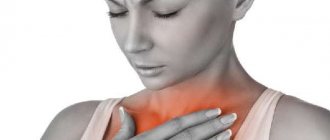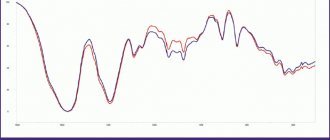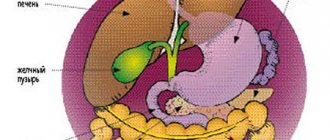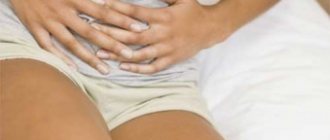Erosive gastritis is an inflammatory disease. It affects the gastric mucosa, causing the formation of erosions of various sizes on it. These formations do not penetrate deep into the walls of the stomach and do not leave marks after healing.
It is the depth of penetration into the stomach wall that distinguishes erosive gastritis from an ulcer. The latter disease can affect not only the inner surface, but also deeper tissues and even the muscle layer.
Erosive gastritis is dangerous due to complications. Statistics show that a fifth of gastric bleeding is associated with erosions on the mucous membrane. Therefore, in modern gastroenterology, this form of the disease is increasingly referred to as “hemorrhagic gastropathy or gastritis” and “papular gastropathy.”
Erosive gastritis is a common pathology. A quarter of examinations for heartburn, abdominal pain, and nausea end with this diagnosis. The disease affects both men and women. The disease can develop at any age. True, young children are diagnosed much less often.
Studies show that in recent years, cases of diagnosing erosive gastritis have become more frequent. According to some studies, the incidence of diseases has increased tenfold. Scientists attribute this to an increase in the amount of stress, disruption of diet and quality of nutrition. This may also be due to improved diagnostic methods. When carrying out preventive examinations, the disease can be identified at the initial stage, even in the absence of complaints.
Consult a gastroenterologist
Don't delay treatment
Causes of erosive gastritis
In the vast majority of cases, the development of the disease is caused by Helicobacter pylori. However, doctors tend to believe that the mere presence of bacteria in the stomach is not enough. For the disease to appear, a combination of several factors is necessary.
The bacterium Helicobacter pylori was isolated in 1981. It is resistant to acidic conditions and is capable of secreting enzymes that weaken the protective environment of the stomach walls. By multiplying, this microorganism causes local inflammation and the formation of erosions. Helicobacter pylori is quite resistant to antibacterial drugs, which makes treatment difficult.
Research shows that more than 70% of the world's population is infected with Helicobacter pylori. At the moment, this is the most common infection. However, for various reasons, in most cases the presence of bacteria in the body does not cause the development of the disease and infection proceeds unnoticed.
In addition to the presence of pathogenic microorganisms in the stomach, the development of erosive gastritis can also be provoked by other reasons:
- severe stress
- chronic mental stress
- regular alcohol intake
- eating disorder with long periods of fasting
- eating spicy and salty foods
- smoking in the morning before breakfast
- taking certain medications
- liver and pancreas diseases
- chronic gastrointestinal diseases
- diabetes
- harmful working conditions
- reflux of the contents of the duodenum into the stomach
The combination of infection by pathogenic microorganisms with provoking factors reduces the protective function of the body. There is a release of bile, increased production of pepsin and acid. This significantly impairs the ability of the epithelium to regenerate and produce protective mucus and leads to the appearance of defects in the gastric mucosa and the formation of erosive gastritis.
Folk remedies
Traditional medicine can be a good help for drug therapy in restoring tissue and normalizing stomach functions, but if used correctly. It is best if folk remedies are agreed upon with your doctor. The following folk methods are widely used:
- Potato juice is taken 3 times a day before meals, and the dose is gradually increased from 25 ml to 100 ml, the course of treatment is 15 days.
- Sea buckthorn in the form of berries.
- Sea buckthorn oil is taken 3 times a day, 1 tbsp. l.
- Cabbage juice is taken 100 ml 3 times a day for 20-30 days.
- A mixture of flaxseeds with water (2 tablespoons per 0.5 liters of water), consumed 60-70 ml 3-4 times a day before meals for 15-25 days.
- Honey can be used separately or added to any composition.
- Sea buckthorn infusion: the berries are poured with boiling water (in a ratio of 1:5) and infused for 2 hours, honey is added to the cooled composition, and drunk in a volume of 0.8-1 liters during the day.
Erosive gastritis is a fairly dangerous disease and is one of the most severe types of gastritis. The effectiveness of treatment largely depends on the timely initiation of treatment. At the first signs, you should consult a doctor, since self-diagnosis is very difficult due to the similarity of symptoms with many other diseases.
Classification of forms of erosive gastritis
- Primary erosions (have no connection with previously identified pathology) and secondary (the result of progression, existing disease).
- Malignant (appears in the presence of an oncological process) and benign (can be single or multiple).
- Immature (young formations) and mature (have areas of tissue necrosis).
Based on the type and shape of formations on the mucous membrane, the following types are distinguished:
- superficial (small, flat in shape and with a distinct edge);
- full (raised above the surface of the mucosa);
- polypoid (can have a diameter of up to one and a half centimeters, do not heal for a long time and constantly worsen).
List of sources
- Nikiforov P. A. et al. Diagnosis and follow-up of chronic erosions of the antrum of the stomach // Kremlin Medicine. Clinical Bulletin. – 2008. – No. 4. – P. 61-64.
- Belova E.V. Characteristics of aggressive-protective factors in erosions of the gastroduodenal mucosa / EB Belova, Ya.M. Vakhrushev // Therapist. archive. 2002. - No. 2- P. 17-20.
- Mosina, L. M. Some pathogenetic mechanisms of erosive and ulcerative lesions of the gastroduodenal zone / L. M. Mosina, L. V. Matveeva, E. A. Mitina // International Journal of Experimental Education. – 2011. – No. 7. – P. 40-42
- Svinitsky, A. S. Stomach erosions: issues of pathogenesis, clinical picture, diagnosis and treatment / A. S. Svinitsky, G. A. Solovyova // Clinical medicine. – 2008. – T. 86, No. 9. – P. 18-24.
- Maev I.V. Chronic gastric erosions: mechanisms of etiopathogenesis and new approaches to treatment // Clinical perspectives of gastroenterology and hepatology. - 2002. - No. 2. - P. 15-20.
Symptoms of erosive gastritis
Patients suffering from erosive gastritis can present many different complaints, both specific and nonspecific:
- nausea and rare episodes of vomiting
- decreased appetite or complete absence of it
- increased gas formation
- heartburn
- belching
- pain in the epigastrium on an empty stomach or an hour and a half after eating
- sudden weight loss
- black stool due to bleeding
- vomiting black-brown mass
Patients may also complain of increased drowsiness and fatigue, decreased tolerance to usual stress, the appearance of shortness of breath and tachycardia. Such symptoms may indicate the presence of hidden bleeding.
The pathology symptoms listed above indicate that the disease may have symptoms of gastric bleeding and the presence of mucosal defects.
Drug therapy
Drugs to improve gastric motor function A number of well-known experts have recommended a special method for the treatment of erosive gastritis, approved by WHO. The duration of this course of therapy is 14-15 days. Aggressive treatment is carried out with proton pump inhibitors, histamine receptor blockers and prokinetics. In the first stage, a triple regimen is used, consisting of one drug such as a proton pump inhibitor and two antibacterial substances: amoxicillin and clarithromycin.
If the first regimen does not radically change the situation, then a course of therapy is prescribed according to the second regimen, which includes a complex of 4 drugs: bismuth dicitrate, proton pump inhibitor, tetracycline and metronidazole. Antisecretory drugs and antacids reduce the activity of oxidized gastric juice, reduce total acidity and stop tissue erosion and erosion of the mucous membrane. The drugs Maalox, Almagel, Gelusil, Renicidin, Omeprazole, Gaviscon and some others have shown sufficient effectiveness in this direction. Digestion can be stabilized by using enzyme-type products: mezim, festal, panzinorm, etc.
For patients with a severe stage of the disease, intravenous administration of liquid antacids and blockers such as cimetidine, famotidine is provided; blood replacement drugs are used. Painful symptoms of a spasmodic nature are relieved with the help of antispasmodics: no-shpa, papaverine.
How is erosive gastritis diagnosed?
Erosive gastritis has symptoms similar to other gastrointestinal diseases. Therefore, to clarify the diagnosis, additional examination is prescribed. Most often, doctors recommend the following laboratory and instrumental studies:
- a general blood test to determine the presence of anemia;
- determination of occult blood in feces;
- taking a section of the mucosa for cytology and histology;
- PCR for diagnosing Helicobacter pylori infection;
- fibrogastroscopy (FGDS) with a biopsy of the inflamed area;
- radiography with contrast.
Sign up for FGDS
Don't delay treatment
Diagnostics
To determine the type of gastritis, the first step is endoscopy. Then blood and stool tests are mandatory. When diagnosis is difficult, X-ray examination is sometimes used.
Diagnosis of gastritis should only be carried out by a gastroenterologist. You cannot independently diagnose yourself or someone else, unless, of course, you have special education. Self-medication and self-diagnosis without medical education often leads to deaths.
Treatment of erosive gastritis
For the treatment of pathology, conservative tactics are usually chosen. Surgery is very rarely required.
The basis of successful treatment is diet and regular medication. Doctors usually prescribe a set of tablets to destroy Helicobacter pylori, relieve symptoms of the disease and stimulate healing of the mucous membrane.
Since Helicobacter pylori is an antibiotic-resistant microorganism, a combination of three or four drugs is chosen to destroy it. Treatment is not easy and takes quite a long time.
If there is bleeding, in addition to taking medications, the doctor may recommend thermo- or electrocoagulation of the mucous membrane, laser exposure, staples or endoscopic stitching.
During treatment of the pathology, the patient should adhere to a fractional diet plan. There should be at least 5 small meals a day. To reduce the likelihood of mechanical damage to the mucous membrane during healing, you should eat grated food or cooked with steam. It is also necessary to avoid eating too hot or cold foods, and avoid eating salty, fried, fatty and spicy foods. Sodas, strong coffee, tea and alcoholic drinks are not allowed.
The importance of protein in the diet
Dietary restrictions are necessary for a speedy recovery, but it is very important that the diet contains all the necessary nutrients.
On a note
Protein is an important building material for all cells; in addition, proteins are needed to strengthen the immune system and transport various substances, including many medications.
For gastritis, it is important that the diet includes a sufficient amount of easily digestible protein with a complete amino acid composition.
Products of the DISO® brand have been used in clinical practice for therapeutic and preventive nutrition for more than 25 years. Nutrimun is added when preparing dietary and healthy meals, saturating the diet with protein of high biological value, promoting a speedy recovery and rehabilitation.
Prevention
You can prevent the onset of the disease by observing personal hygiene measures, maintaining your diet, and giving up smoking and drinking alcoholic beverages. When working in hazardous industries, you should take precautions. When diagnosing diseases, carry out their timely treatment. You should also avoid stressful situations.
Why choose American Medical Clinic?
- Team of professionals. Candidates and doctors of medical sciences, professors and associate professors of departments of leading universities, doctors of the first and highest qualification categories work in the clinic 24 hours a day, 7 days a week. We work without holidays or weekends to ensure that you are healthy and happy.
- Regular professional development. Each doctor regularly takes advanced training courses, attends seminars, goes on internships, participates in conferences, and undergoes training abroad. This helps maintain the qualifications of doctors at the highest level. Today, the training of AMK doctors allows them to train young doctors, acting as experts at European-level seminars.
- Hi-tech. We regularly invest not only in training and professional development of personnel, but also in purchasing the most modern equipment from leading European manufacturers.
- The value of time. The American Medical Clinic has created all the conditions for a comfortable, comprehensive examination and diagnosis of a patient on the day of treatment.
- Trust from clients. Over 25 years of impeccable work, more than 500,000 patients have entrusted their health to us. More than 80% of patients recommend us to their family and friends.
- Guarantees. We are 100% responsible for the quality of the services provided, the high level of which is confirmed by many years of experience. The attention and sensitive attitude of doctors with more than ten years of experience in medical practice give a sustainable positive result.
Diso Nutrimoon
Protein for treatment and rehabilitation
An easily digestible, tasteless protein mixture, a source of proteins and amino acids necessary for the body to fight illness, recover from injuries, illnesses and operations.
More details
Diso Nutrimun can be consumed not only by adults, but also by children over 3 years old, pregnant and nursing mothers - it is a safe and healthy food product. And besides, it is easy to use: it does not lose its nutritional properties after heat treatment, can be stored for a long time, and is easy to stir.
Authorized Products
Nutrition for erosive gastritis with high acidity includes inclusion in the diet:
- Weak vegetable broths and first courses based on it, to which carefully pureed cereals (white rice, semolina, oatmeal, buckwheat), vermicelli/thin noodles, vegetables are added and seasoned with butter or an egg-milk mixture. It is allowed to add dill and pureed meat in small quantities.
- Lean meats (chicken, beef, turkey, lamb) in the form of boiled/steamed cutlets and baked dishes. The meat must be pre-boiled and then subjected to further cooking.
- Low-fat river/sea fish, with the skin removed and steamed/baked in pieces or chopped in the form of cutlets, meatballs, zraz.
- Porridges boiled in water to a semi-viscous state (white rice, buckwheat, oatmeal), vermicelli/thin noodles in the form of baked krupenik with cottage cheese and puddings.
- Various boiled vegetables (new peas, potatoes, beets, cauliflower, carrots), prepared in pureed form (puree) with the addition of butter.
- Dried/day-old white bread, cookies and biscuits.
- Non-acidic fermented milk and dairy products (fresh cottage cheese, yogurt, kefir), sour cream only in ready-made dishes. It is allowed to eat dishes made from cottage cheese (puddings, cheesecakes, dumplings), occasionally mild cheese in grated form, and eggs in the form of a steam omelet.
- Non-acidic desserts from pureed berries/fruits, baked/stewed or in the form of jelly, puree, jelly, compotes. It is allowed to eat non-sour jam, meringues, honey, marshmallows, and marshmallows.
- Rosehip decoction, fruit juices, weak tea/coffee with milk.
Table of permitted products
| Proteins, g | Fats, g | Carbohydrates, g | Calories, kcal | |
Vegetables and greens | ||||
| zucchini | 0,6 | 0,3 | 4,6 | 24 |
| cauliflower | 2,5 | 0,3 | 5,4 | 30 |
| potato | 2,0 | 0,4 | 18,1 | 80 |
| carrot | 1,3 | 0,1 | 6,9 | 32 |
| beet | 1,5 | 0,1 | 8,8 | 40 |
| pumpkin | 1,3 | 0,3 | 7,7 | 28 |
Fruits | ||||
| apricots | 0,9 | 0,1 | 10,8 | 41 |
| bananas | 1,5 | 0,2 | 21,8 | 95 |
| nectarine | 0,9 | 0,2 | 11,8 | 48 |
| peaches | 0,9 | 0,1 | 11,3 | 46 |
| apples | 0,4 | 0,4 | 9,8 | 47 |
Berries | ||||
| strawberry | 0,8 | 0,4 | 7,5 | 41 |
| raspberries | 0,8 | 0,5 | 8,3 | 46 |
Cereals and porridges | ||||
| buckwheat (kernel) | 12,6 | 3,3 | 62,1 | 313 |
| semolina | 10,3 | 1,0 | 73,3 | 328 |
| cereals | 11,9 | 7,2 | 69,3 | 366 |
| white rice | 6,7 | 0,7 | 78,9 | 344 |
Flour and pasta | ||||
| noodles | 12,0 | 3,7 | 60,1 | 322 |
Bakery products | ||||
| white bread crackers | 11,2 | 1,4 | 72,2 | 331 |
Confectionery | ||||
| jam | 0,3 | 0,2 | 63,0 | 263 |
| jelly | 2,7 | 0,0 | 17,9 | 79 |
| marshmallows | 0,8 | 0,0 | 78,5 | 304 |
| paste | 0,5 | 0,0 | 80,8 | 310 |
Raw materials and seasonings | ||||
| honey | 0,8 | 0,0 | 81,5 | 329 |
| sugar | 0,0 | 0,0 | 99,7 | 398 |
| milk sauce | 2,0 | 7,1 | 5,2 | 84 |
Dairy | ||||
| milk | 3,2 | 3,6 | 4,8 | 64 |
| kefir | 3,4 | 2,0 | 4,7 | 51 |
| cream | 2,8 | 20,0 | 3,7 | 205 |
| sour cream | 2,8 | 20,0 | 3,2 | 206 |
| curdled milk | 2,9 | 2,5 | 4,1 | 53 |
Cheeses and cottage cheese | ||||
| cottage cheese | 17,2 | 5,0 | 1,8 | 121 |
Meat products | ||||
| boiled beef | 25,8 | 16,8 | 0,0 | 254 |
| beef liver | 17,4 | 3,1 | 0,0 | 98 |
| boiled beef tongue | 23,9 | 15,0 | 0,0 | 231 |
| boiled veal | 30,7 | 0,9 | 0,0 | 131 |
| rabbit | 21,0 | 8,0 | 0,0 | 156 |
Bird | ||||
| boiled chicken | 25,2 | 7,4 | 0,0 | 170 |
| turkey | 19,2 | 0,7 | 0,0 | 84 |
Eggs | ||||
| chicken eggs | 12,7 | 10,9 | 0,7 | 157 |
Oils and fats | ||||
| butter | 0,5 | 82,5 | 0,8 | 748 |
| ghee | 0,2 | 99,0 | 0,0 | 892 |
Non-alcoholic drinks | ||||
| coffee with milk and sugar | 0,7 | 1,0 | 11,2 | 58 |
| black tea with milk and sugar | 0,7 | 0,8 | 8,2 | 43 |
Juices and compotes | ||||
| apricot juice | 0,9 | 0,1 | 9,0 | 38 |
| carrot juice | 1,1 | 0,1 | 6,4 | 28 |
| pumpkin juice | 0,0 | 0,0 | 9,0 | 38 |
| * data is per 100 g of product | ||||
Fully or partially limited products
The diet for erosive gastritis with high acidity involves excluding from the diet:
- Raw vegetables (white cabbage, radishes, tomatoes, radishes, rutabaga, turnips, beans, onions, peas, sorrel, garlic), mushrooms and hard-skinned fruits as they contain coarse dietary fiber and irritate the gastric mucosa.
- Products containing large quantities of connective tissue (skin, veins, cartilage) are difficult to digest.
- Highly extractive meat/fish broths, borscht, cabbage soup, okroshka.
- Animal/cooking fats, mayonnaise, margarine.
- Fatty varieties of red meat, sea/river fish, duck, goose, smoked meats, canned meat/fish.
- Coarse types of pasta and cereals (millet, pearl barley, corn, barley).
- Hard-boiled/fried eggs are difficult to digest foods.
- Pickled, pickled, salted vegetables, canned vegetables.
- Mustard, horseradish, hot spices, tomato sauce, which irritate the gastric mucosa.
- Butter/puff pastry, fresh white and rye bread.
- Fermented milk products that have high acidity, as they stimulate the secretion of gastric juice.
- Ice cream, sour fruits/berries, chocolate, carbonated drinks, alcohol.
Table of prohibited products
| Proteins, g | Fats, g | Carbohydrates, g | Calories, kcal | |
Vegetables and greens | ||||
| vegetables legumes | 9,1 | 1,6 | 27,0 | 168 |
| swede | 1,2 | 0,1 | 7,7 | 37 |
| cabbage | 1,8 | 0,1 | 4,7 | 27 |
| sauerkraut | 1,8 | 0,1 | 4,4 | 19 |
| green onion | 1,3 | 0,0 | 4,6 | 19 |
| bulb onions | 1,4 | 0,0 | 10,4 | 41 |
| cucumbers | 0,8 | 0,1 | 2,8 | 15 |
| canned cucumbers | 2,8 | 0,0 | 1,3 | 16 |
| white radish | 1,4 | 0,0 | 4,1 | 21 |
| turnip | 1,5 | 0,1 | 6,2 | 30 |
| canned tomatoes | 1,1 | 0,1 | 3,5 | 20 |
| horseradish | 3,2 | 0,4 | 10,5 | 56 |
| spinach | 2,9 | 0,3 | 2,0 | 22 |
| sorrel | 1,5 | 0,3 | 2,9 | 19 |
Mushrooms | ||||
| mushrooms | 3,5 | 2,0 | 2,5 | 30 |
Cereals and porridges | ||||
| corn grits | 8,3 | 1,2 | 75,0 | 337 |
| pearl barley | 9,3 | 1,1 | 73,7 | 320 |
| millet cereal | 11,5 | 3,3 | 69,3 | 348 |
| barley grits | 10,4 | 1,3 | 66,3 | 324 |
Confectionery | ||||
| candies | 4,3 | 19,8 | 67,5 | 453 |
Ice cream | ||||
| ice cream | 3,7 | 6,9 | 22,1 | 189 |
Cakes | ||||
| cake | 4,4 | 23,4 | 45,2 | 407 |
Raw materials and seasonings | ||||
| mustard | 5,7 | 6,4 | 22,0 | 162 |
| ginger | 1,8 | 0,8 | 15,8 | 80 |
| ketchup | 1,8 | 1,0 | 22,2 | 93 |
| mayonnaise | 2,4 | 67,0 | 3,9 | 627 |
| ground black pepper | 10,4 | 3,3 | 38,7 | 251 |
| chilli | 2,0 | 0,2 | 9,5 | 40 |
Dairy | ||||
| sour cream | 2,8 | 20,0 | 3,2 | 206 |
Meat products | ||||
| pork | 16,0 | 21,6 | 0,0 | 259 |
| ham | 22,6 | 20,9 | 0,0 | 279 |
Sausages | ||||
| dry-cured sausage | 24,1 | 38,3 | 1,0 | 455 |
| sausages | 10,1 | 31,6 | 1,9 | 332 |
| sausages | 12,3 | 25,3 | 0,0 | 277 |
Bird | ||||
| smoked chicken | 27,5 | 8,2 | 0,0 | 184 |
| duck | 16,5 | 61,2 | 0,0 | 346 |
| smoked duck | 19,0 | 28,4 | 0,0 | 337 |
| goose | 16,1 | 33,3 | 0,0 | 364 |
Fish and seafood | ||||
| dried fish | 17,5 | 4,6 | 0,0 | 139 |
| smoked fish | 26,8 | 9,9 | 0,0 | 196 |
| canned fish | 17,5 | 2,0 | 0,0 | 88 |
Oils and fats | ||||
| animal fat | 0,0 | 99,7 | 0,0 | 897 |
| cooking fat | 0,0 | 99,7 | 0,0 | 897 |
Non-alcoholic drinks | ||||
| bread kvass | 0,2 | 0,0 | 5,2 | 27 |
| * data is per 100 g of product | ||||





